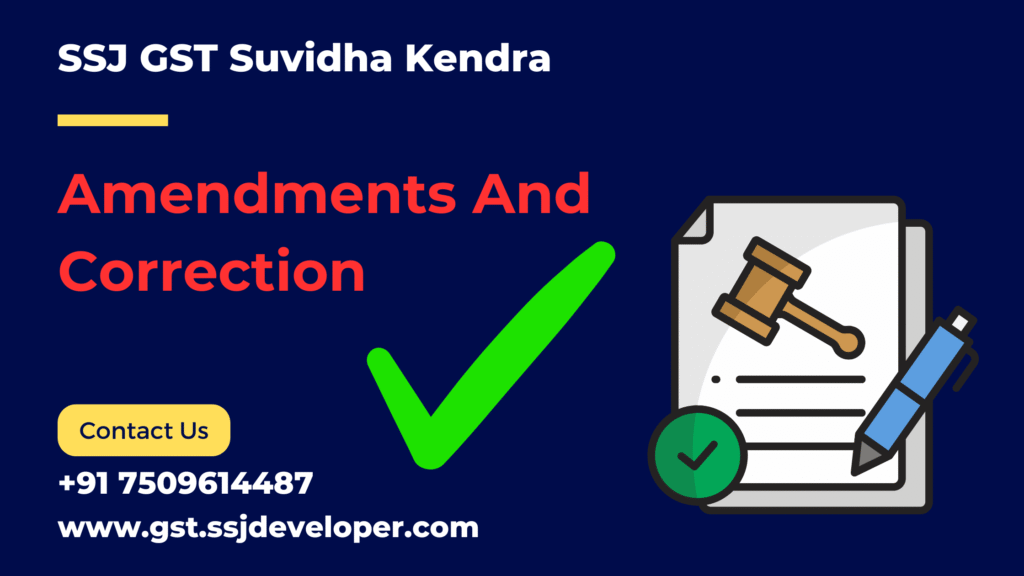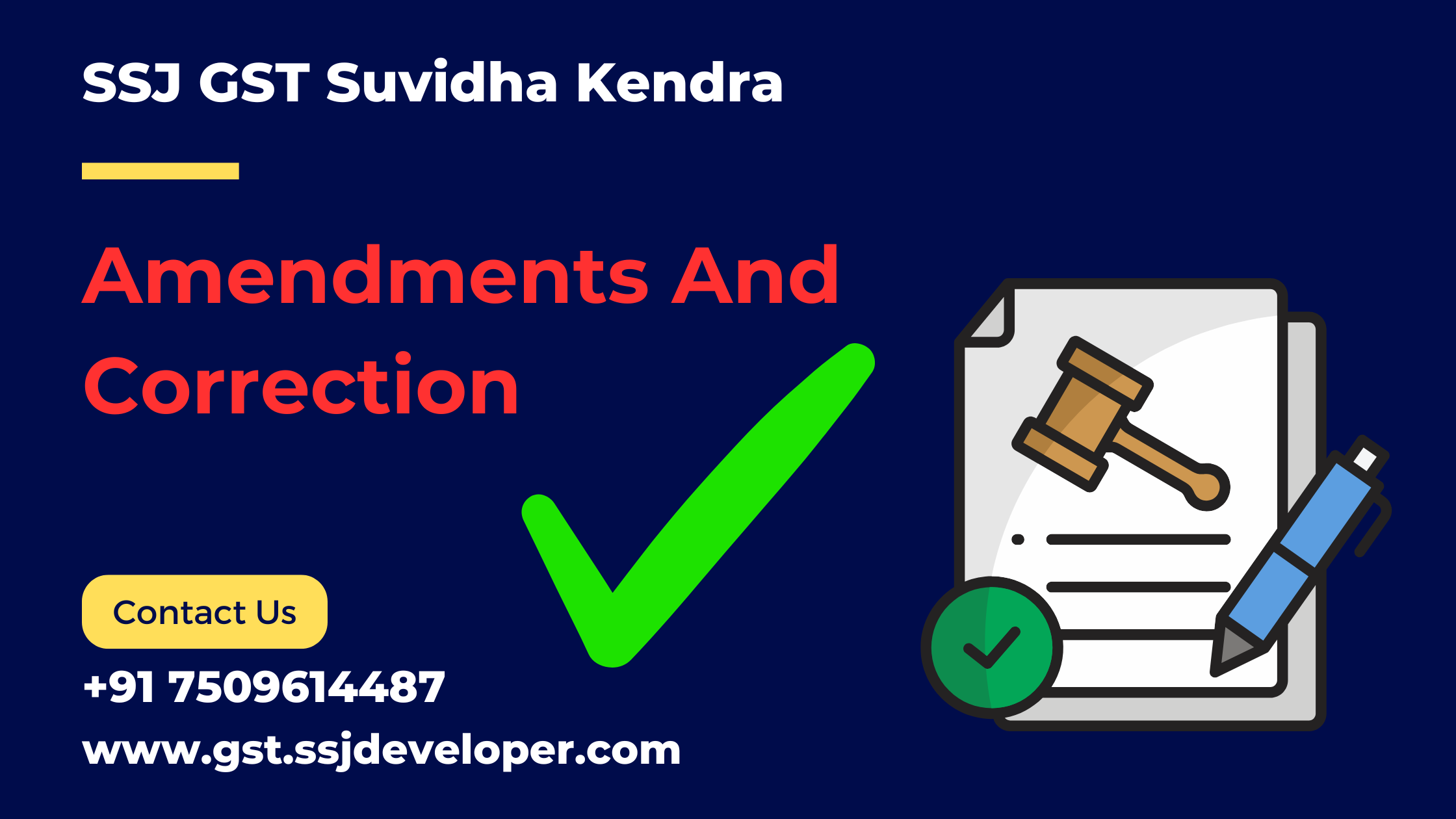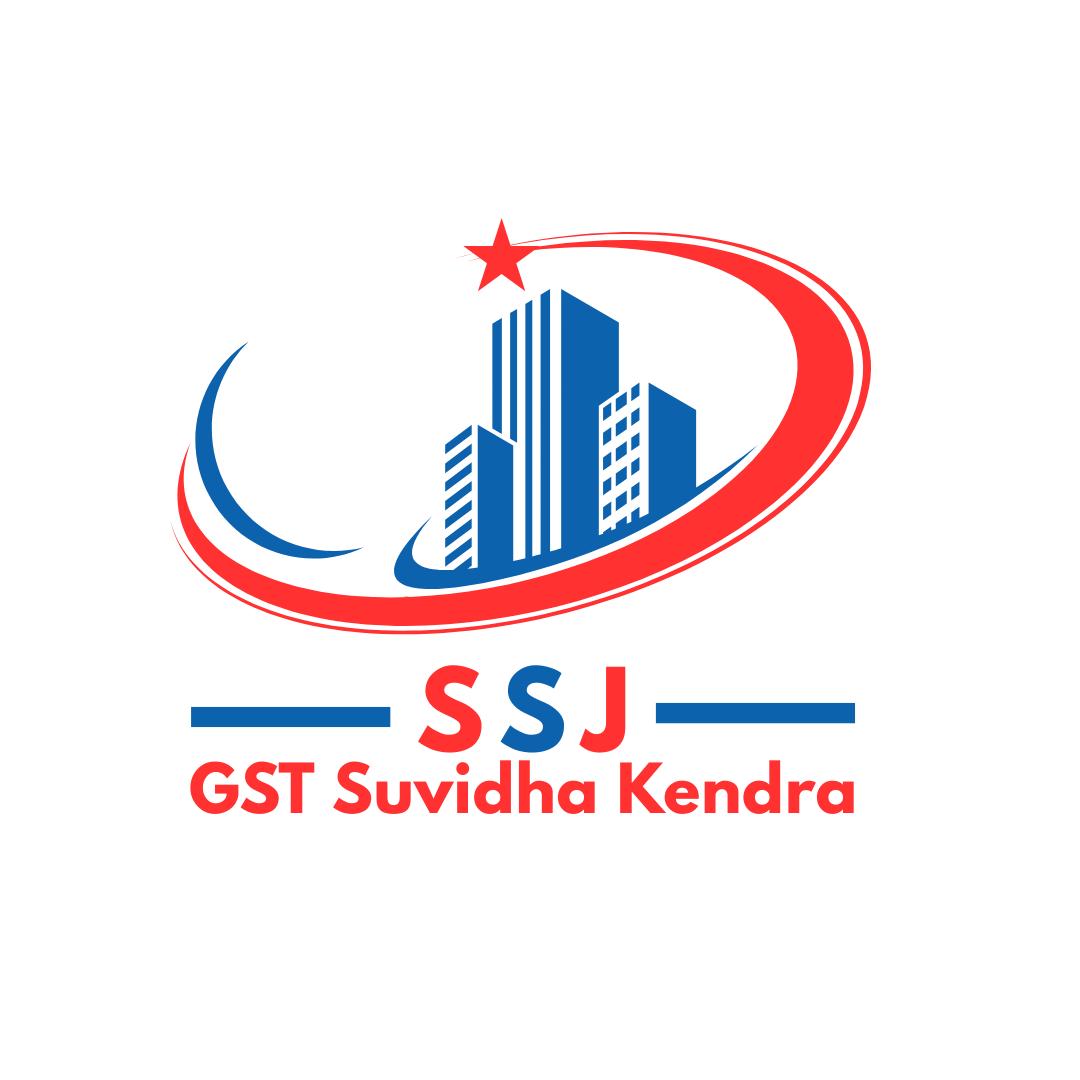🔹Introduction
A company’s foundation rests on two critical documents: the Memorandum of Association (MOA) and Articles of Association (AOA). These documents define the purpose, scope, and internal rules of a business in India. But what happens when your business evolves, and you need to align your company’s legal documents with your new goals? That’s where amendments and corrections come in. At SSJ GST Suvidha Kendra, we simplify these complex processes for you, ensuring full compliance with the Companies Act, 2013, and keeping your company on track with your business vision.
Updating your MOA or AOA isn’t just about staying compliant—it’s about future-proofing your business. From changing your company’s name to fixing clerical errors, every modification must follow a meticulous process involving special resolutions, filings with the Registrar of Companies (ROC), and sometimes approval from the Central Government. Mistakes can lead to costly delays or legal troubles, making professional guidance not just advisable but essential. This article provides an in-depth look at amendments and corrections in MOA and AOA, including processes, legal requirements, examples, and why SSJ GST Suvidha Kendra is your trusted partner for hassle-free services.
🔹परिचय
किसी भी कंपनी की नींव दो महत्वपूर्ण दस्तावेज़ों पर आधारित होती है – मेमोरेंडम ऑफ़ असोसिएशन (MOA) और आर्टिकल्स ऑफ़ असोसिएशन (AOA)। ये दस्तावेज़ कंपनी का उद्देश्य, कार्यक्षेत्र और आंतरिक नियम तय करते हैं। लेकिन जब व्यापार बढ़ता है और नई आवश्यकताएँ सामने आती हैं, तब इन दस्तावेज़ों में संशोधन या सुधार ज़रूरी हो जाते हैं।
SSJ GST सुविधा केंद्र पर हम यह प्रक्रिया आसान और नियमों के अनुरूप बनाते हैं ताकि आपकी कंपनी Companies Act, 2013 के साथ पूरी तरह संगत रहे।

🔹 Understanding the Importance of MOA and AOA
What is MOA?
The Memorandum of Association (MOA) serves as the charter of your company. It defines your company’s relationship with the outside world by laying out fundamental details like name, objectives, registered office, capital structure, and liability clause. Essentially, it’s your company’s constitution, telling the world what your business is allowed to do.
The MOA outlines:
- Name Clause: Your company’s legal name.
- Registered Office Clause: The state where your company’s registered office is located.
- Object Clause: The business activities your company can pursue.
- Liability Clause: Whether liability of members is limited or unlimited.
- Capital Clause: Authorized share capital details.
- Association Clause: Declaration by subscribers to form the company.
The MOA is filed at the time of incorporation and can only be altered through formal processes defined under the Companies Act, 2013. Ignoring or bypassing the correct amendment process can invalidate changes or attract penalties.
What is AOA?
The Articles of Association (AOA) is the rulebook for your company’s internal management. Unlike the MOA, which defines your company’s scope, the AOA regulates day-to-day operations, such as directors’ powers, meeting procedures, dividend policies, and rights of shareholders.
Key areas covered in AOA include:
- Board meetings: Procedures, quorum, notice period.
- Shareholder meetings: Rights, voting, quorum.
- Director qualifications and duties.
- Dividend policies.
- Issuance and transfer of shares.
The AOA can also be amended, but any changes must adhere to specific legal procedures to ensure validity. An outdated or inconsistent AOA can cause conflicts during audits, mergers, or funding rounds, making regular updates crucial for smooth business functioning.
MOA क्या है?
MOA आपकी कंपनी का चार्टर होता है जिसमें शामिल होते हैं:
-
नाम खंड
-
रजिस्टर्ड ऑफिस खंड
-
उद्देश्य खंड
-
देयता खंड
-
पूंजी खंड
-
एसोसिएशन खंड
AOA क्या है?
AOA कंपनी का आंतरिक नियम-पुस्तक है जिसमें शामिल होते हैं:
-
निदेशकों की शक्तियाँ
-
बैठक की प्रक्रिया
-
डिविडेंड नीति
-
शेयरहोल्डर अधिकार
Document Required
- Digital Signature Certificate (DSC)
- Notice convening general Meeting with relevant explanatory statement
- Minutes of General meeting
- Annual return
- Financial statement
- Advertisement for change in objects
- Memorandum of association
- Article of association
- Return Deposit (ITR)
- And Company Details

🔹Why Amendments and Corrections are Essential
Amendments and corrections in MOA and AOA aren’t just bureaucratic exercises; they’re critical tools to adapt your company’s legal framework to changing business realities. Here’s why timely updates are important:
- Alignment with business evolution: Your initial objectives may not match your current direction. For instance, expanding into new industries might require updating your object clause.
- Compliance with law: The Companies Act, 2013, mandates correct and updated MOA/AOA documents to avoid legal penalties.
- Attracting investors: Outdated or inconsistent MOA/AOA documents can be red flags for potential investors or partners, affecting funding opportunities.
- Avoiding disputes: Clear, updated rules in AOA minimize conflicts between shareholders, directors, and stakeholders.
- Smooth restructuring: Mergers, acquisitions, or funding rounds require current legal documents for due diligence.
Corrections also matter because even a small typographical error can have legal consequences. For example, a misspelled company name in MOA can cause delays in government approvals, banking processes, or agreements with clients. It’s not just about looking professional; it’s about staying compliant and protecting your company from unnecessary risks.
🔹संशोधन और सुधार क्यों ज़रूरी हैं?
-
व्यवसाय की नई दिशा के साथ तालमेल
-
कानूनी अनुपालन बनाए रखना
-
निवेशकों को आकर्षित करना
-
विवादों से बचाव
-
पुनर्गठन की सुविधा
MOA में संशोधन
-
कंपनी का नाम बदलना
-
उद्देश्य में परिवर्तन
-
अधिकृत पूंजी बढ़ाना
-
देयता खंड बदलना
AOA में संशोधन
-
वित्तीय वर्ष बदलना
-
निदेशक की योग्यताओं में संशोधन
-
बैठक प्रक्रिया बदलना
-
मतदान अधिकार बदलना
Our Pricing
🔹Why Choose SSJ GST Suvidha Kendra for MOA and AOA Services
Amending or correcting your company’s MOA or AOA can seem overwhelming, but it doesn’t have to be. SSJ GST Suvidha Kendra provides an all-in-one service, guiding you through each step—from drafting resolutions to obtaining ROC or Central Government approvals. Here’s why businesses trust us:





Thousands of companies have trusted us for timely, accurate, and compliant amendments and corrections. Let us make the process easy for you too.
🔹क्यों चुनें SSJ GST सुविधा केंद्र?
✅ विशेषज्ञ टीम
✅ समय पर सेवा
✅ पारदर्शी शुल्क
✅ एंड-टू-एंड सपोर्ट
✅ बिना झंझट प्रक्रिया
Amendments and corrections to your MOA and AOA aren’t just administrative tasks—they’re essential steps to align your company’s legal documents with your current business strategies, avoid disputes, and stay compliant with the Companies Act, 2013. Whether you need to change your company’s name, expand your business objects, or correct a simple typo, it’s critical to follow the correct process with the help of professionals who understand the complexities involved.
SSJ GST Suvidha Kendra is your trusted partner for seamless, compliant, and hassle-free amendments and corrections. Our team takes care of everything—from drafting resolutions to securing ROC approvals—so you can focus on growing your business.
MOA और AOA में संशोधन या सुधार केवल औपचारिकता नहीं बल्कि आपकी कंपनी को भविष्य के लिए सुरक्षित करने का तरीका है। SSJ GST सुविधा केंद्र आपके लिए इस प्रक्रिया को तेज़, सरल और कानूनी रूप से संगत बनाता है।
Frequently Asked Questions
The MOA is the constitution of the company, while the AOA lays down the rules and regulations governing its internal operations. The MOA is a public document, while the AOA is a private document.
Amendments to the MOA can be made to change the company’s name, objects, capital, or liability clause. Amendments to the AOA can be made to change the company’s financial year, director’s qualification, or procedure for holding meetings.
Corrections to the MOA and AOA can be made to correct clerical or accidental errors, such as incorrect dates or amounts, or to correct inconsistencies between the MOA and AOA.
To amend the MOA, you need to pass a special resolution at a general meeting of your company’s members. The special resolution must be approved by a majority of not less than three-fourths of the members present and voting, either in person or by proxy.
To amend the AOA, you need to pass a special resolution at a general meeting of your company’s members. The special resolution must be approved by a majority of not less than two-thirds of the members present and voting, either in person or by proxy.
Once the special resolution is passed, you need to file a copy of it with the Registrar of Companies (ROC), along with the necessary fees. The ROC will then issue a certificate of alteration, which will be deemed to be the amended MOA or AOA of your company. For better understanding, please contact your SRM.
To correct the MOA or AOA of your company, you need to file a Form MGT-14 with the ROC. The Form MGT-14 must be accompanied by a copy of the MOA or AOA, as the case may be, with the proposed corrections marked in red.
The ROC will then review the Form MGT-14 and issue a certificate of correction, if satisfied. The certificate of correction will be deemed to be part of the MOA or AOA, as the case may be. For better understanding, please contact your SRM.
There are a number of advantages to amending the MOA or AOA of your company. For example, you can amend the MOA or AOA to:
- Change the company’s name, objects, capital, or liability clause to reflect its current needs.
- Change the company’s financial year, director’s qualification, or procedure for holding meetings to make them more efficient or effective.
- Correct any clerical or accidental errors in the MOA or AOA.
- Correct any inconsistencies between the MOA and AOA.
The most common types of amendments made to the MOA are:
- Change of company name
- Change of company objects
- Change of authorized capital
- Change of liability clause
The most common types of amendments made to the AOA are:
- Change of financial year
- Change of director’s qualification
- Change of procedure for holding meetings
- Change of voting rights of shareholders
- Change of quorum requirements
The most common types of corrections made to the MOA and AOA are:
- Correction of spelling or grammatical errors
- Correction of clerical errors, such as incorrect dates or amounts
- Correction of accidental omissions
- Correction of inconsistencies between the MOA and AOA
If you do not file a copy of the amended MOA or AOA with the ROC within the prescribed time limit, you may be liable to a penalty of up to INR 10,000.
The process of amending or correcting the MOA or AOA can be initiated by the board of directors or by a shareholder(s) holding not less than 10% of the paid-up capital of the company.
The Central Government’s approval is required for certain amendments to the MOA, such as:
- Change in the objects of the company
- Increase in the authorized capital of the company
- Change in the liability clause of the company
The ROC is responsible for reviewing and approving all amendments and corrections to the MOA and AOA. The ROC will issue a certificate of alteration or certificate of correction, as the case may be, once it is satisfied with the amendment or correction.
The fees involved in amending or correcting the MOA or AOA vary depending on the nature of the amendment or correction.
You need to file a copy of the amended MOA or AOA with the ROC within 60 days from the date of passing the special resolution.
If you do not file a copy of the amended MOA or AOA with the ROC within the prescribed time limit, you may be liable to a penalty of up to INR 10,000.
Some of the best practices for amending or correcting the MOA or AOA include:
- Seeking professional advice from the SRM.
- Ensuring that all of the necessary formalities are complied with
- Filing the amended MOA or AOA with the ROC within the prescribed time limit
Some of the common mistakes to avoid when amending or correcting the MOA or AOA include:
- Failing to obtain the prior approval of the Central Government for certain amendments to the MOA
- Failing to pass a special resolution at a general meeting of the company’s members
- Failing to file a copy of the amended MOA or AOA with the ROC within the prescribed time limit
If you make unauthorized changes to the MOA or AOA, the changes may be held to be invalid and void. Additionally, you may be liable to a penalty of up to INR 10,000.
There are a number of resources available to help you learn more about amendments and corrections to the MOA or AOA. These resources include:
- The Companies Act, 2013
- The website of the Ministry of Corporate Affairs
- Books and articles on company law

